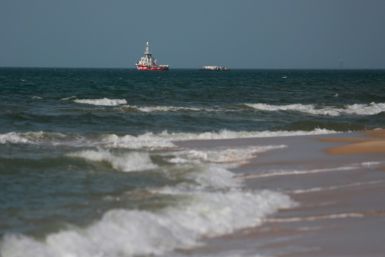Private Space Race: UK-Based Starchaser Promises Cheaper Flight Than SpaceX, Virgin Galactic

U.K.-based private space travel company Starchaser has promised space-flight services that will be 10 times cheaper than Elon Musk’s SpaceX and more immersive than Richard Branson’s Virgin Galactic, top private space firms that are in the race to provide commercially viable space travel.
The Manchester-based company is planning on launching its first manned mission by 2020. But this will only happen if it is able to raise £10 million. Good news for the company is that it has already raised half the amount.
According to a report by Daily Star Sunday on Saturday, the company is also aiming to put tourists into space by 2022, with seats on flights costing around $132k.
The company has already been actively testing its rockets at test sites in New Mexico and Northumberland. They are aiming at a three-person capsule for the test flights and the first manned missions the company will conduct.
The managing director of Starchaser, Steve Bennett, was quoted in the report saying, "Our approach to getting people into space is different to our competitors. Richard Branson is looking at using a space plane but it’s already proven that’s dangerous, they’ve killed people. ”
This comes after increased efforts from private U.S. space firms to get to the moon and establish themselves as forerunners in space tourism. Elon Musk’s recent announcements on the moon rocket and plans of starting a million-person Mars colony in the coming years all point to a growing yearning to reach the moon. The SpaceX CEO plans to send a rocket to Mars in 2022, people there in 2024 and build a refueling base so rockets can fly back to Earth.
“Our system’s a lot simpler, Elon Musk and Space X are much more advanced but they’re looking at orbital stuff. We’re looking at sub-orbit which is a lot easier to do and there is still a hell of a market.”
What this means is, SpaceX’s BFR and other space missions look to break the gravitational pull of Earth and enter space. They are being designed to possess the velocity to de-orbit before completing one full orbit of the Earth. Starchaser’s design will reach sub-orbit, meaning it will travel up to a certain altitude above Earth and then its trajectory will stick to Earth's atmosphere as it completes one orbit.
The high-tech firm unleashed a 27-feet reusable research rocket in September, which marked the first successful rocket test in 46 years in Britain.
The spacecraft is capable of flying to the edge of space over 62 miles above the surface of Earth and return. But the maximum altitude for the first flight was limited to 4,000 feet to ensure a safe landing. According to the report, the spacecraft is being designed to exploit the space for commercial space travel at the earliest, even though they plan on doing it on a smaller scale initially.
The company has raised excitement levels among people already, and has a waiting list of 500 people for its first voyage.
“Branson’s looking at sub-orbital flight as well, he’s our closest rival but they’ve got a space plane which is vertical take-off and vertical landing. Ours is conventional, you go up in space suit in a space capsule and you’re brought up like Neil Armstrong,” Bennett added in the report.
© Copyright IBTimes 2024. All rights reserved.











